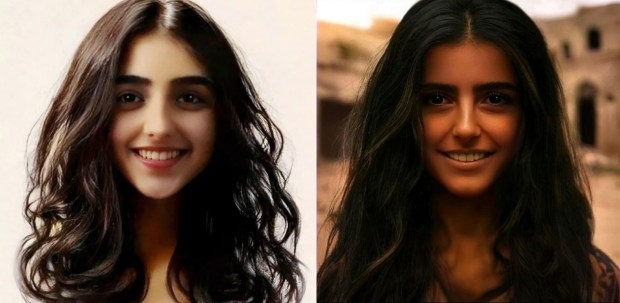What did the Virgin Mary really look like? There are countless depictions of her from throughout the centuries, but none of them is known for certain to be a faithful representation of her physical appearance as she was during her earthly life. Even when she has appeared to visionaries — at Guadalupe, Lourdes, or Fatima, for instance — her appearance seems to adapt to the place and time. The main constant in all cases is that she's always beautiful.
Brazilian artist Átila Soares da Costa Filho wanted to give a possible answer to this question, and has set about trying to reproduce a reasonable likeness of Mary using the Shroud of Turin and computer tools such as AI and digital photo editing.
The Shroud of Turin as a reference
He started with the Shroud of Turin for a logical reason: Jesus was true God, but also true man, born of the Virgin Mary by the power of the Holy Spirit. Every son bears some resemblance to his mother, and Jesus would seem to be no exception. How much more must Jesus look like his Mother, given that he had no human biological father!
So, the artist reasoned that he could work backwards from the one “photographic” image of Jesus we have, namely the image on the Shroud, to Mary’s appearance. But that image shows us Jesus deformed by suffering and death. He needed an image of Jesus in life.
Ray Downing is a computer graphic designer who has created precisely that. He processed and manipulated the information from the Shroud to make 3D images of Jesus as he might have looked as a living adult. His work has been the inspiration for other artists to create their own renditions.
Using high-tech tools
Átila told Aleteia in 2021:
Downing’s results are considered the most authentic and well-accepted among the efforts that have been made. Using this face as a base, I did various experiments with artificial intelligence software and high technology convolutional neural networks to change the gender. Then, I used other programs for adjustments to the face, and lastly, some manual artistic retouching on my part, in order to better define an ethnic and anthropologically feminine physiognomy from Palestine 2,000 years ago…
This gave an image of Mary as an adult, but he also wanted to show what she might have looked like as an adolescent. He again used AI methods to help de-age the image so Mary would appear around the age she was when she gave birth to Jesus.
In the teen portrait, Mary is smiling, in the “splendor of youth, the representation of happiness and expectations, of promises and hope for her life which is just beginning … even more when she discovers she’ll be the mother of the Messiah.”
The older portrait has a “strong, but solemn appearance; a woman who is dramatically committed to her mission and to the sacrifice made by her Redeemer … her son.” Her face reflects “glory, but also sorrow and total self-giving,” the artist explained.
A second, more realistic version
Now, more than two years after the publication of the results of the first experiment, the key images it produced – of Mary as a teenager and as an adult woman – have been made anew with greater realism and detail.
"In 2021, while still working on the [first images], I was already thinking about taking the experiment to a hyperrealistic level. I had a wide range of technical resources for this. Deciding at that time to build faces in an artistic-realistic style, I already knew that the next step would be this one," Átila Soares explains.
The researcher's work yielded the following results, which became widely shared when he released the first images in 2021 and again in 2024 with the new versions.
Reconstruction of the image of Mary as a teenager:

Reconstruction of the image of Mary as an adult:

His first images received support from one of the world's most renowned sindonologists, (those who study the Shroud), researcher and lecturer Barrie M. Schwortz, the official documenting photographer of the Shroud of Turin Research Project.
As of 2021, the images are included in the archives of the Department of Studies of the Fatima Shrine in Portugal. The reconstructions have also been affectionately and enthusiastically received around the world.



